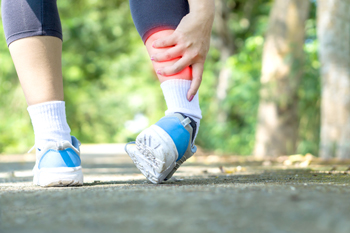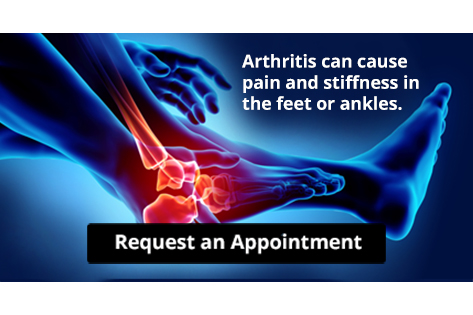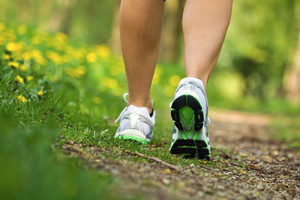Blog - Foot Doctor, Chambersburg and McConnellsburg, PA
The Function of the Sesamoid Bones
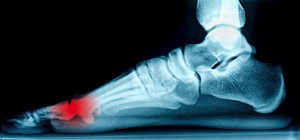 One of the functions of the sesamoid bones is leverage. The sesamoids are attached to tendons in the foot, and they are able to provide additional force while pushing off during a running or jumping activity. The sesamoids are located within ligaments under the big toe, and pain can be felt on the ball of the foot when the sesamoids are injured or inflamed. Sesamoiditis is a condition that occurs when the sesamoid bones become inflamed, and is common among runners and dancers. The healing process generally begins with stopping the activity that caused the injury, and it may help to elevate the affected foot. It is beneficial to wear shoes that fit correctly, and the amount of rest needed can be determined by the severity of the condition. If you have pain in this part of your foot, please consult with a podiatrist who can determine if this is sesamoiditis, and offer you the correct treatment options.
One of the functions of the sesamoid bones is leverage. The sesamoids are attached to tendons in the foot, and they are able to provide additional force while pushing off during a running or jumping activity. The sesamoids are located within ligaments under the big toe, and pain can be felt on the ball of the foot when the sesamoids are injured or inflamed. Sesamoiditis is a condition that occurs when the sesamoid bones become inflamed, and is common among runners and dancers. The healing process generally begins with stopping the activity that caused the injury, and it may help to elevate the affected foot. It is beneficial to wear shoes that fit correctly, and the amount of rest needed can be determined by the severity of the condition. If you have pain in this part of your foot, please consult with a podiatrist who can determine if this is sesamoiditis, and offer you the correct treatment options.
Sesamoiditis is an unpleasant foot condition characterized by pain in the balls of the feet. If you think you’re struggling with sesamoiditis, contact Dr. Steven Schwartz of Pennsylvania. Our doctor will treat your condition thoroughly and effectively.
Sesamoiditis
Sesamoiditis is a condition of the foot that affects the ball of the foot. It is more common in younger people than it is in older people. It can also occur with people who have begun a new exercise program, since their bodies are adjusting to the new physical regimen. Pain may also be caused by the inflammation of tendons surrounding the bones. It is important to seek treatment in its early stages because if you ignore the pain, this condition can lead to more serious problems such as severe irritation and bone fractures.
Causes of Sesamoiditis
- Sudden increase in activity
- Increase in physically strenuous movement without a proper warm up or build up
- Foot structure: those who have smaller, bonier feet or those with a high arch may be more susceptible
Treatment for sesamoiditis is non-invasive and simple. Doctors may recommend a strict rest period where the patient forgoes most physical activity. This will help give the patient time to heal their feet through limited activity. For serious cases, it is best to speak with your doctor to determine a treatment option that will help your specific needs.
If you have any questions please feel free to contact our offices located in Chambersburg, and Mcconnellsburg, PA . We offer the newest diagnostic and treatment technologies for all your foot and ankle needs.
Can Neuropathy Be Inherited?
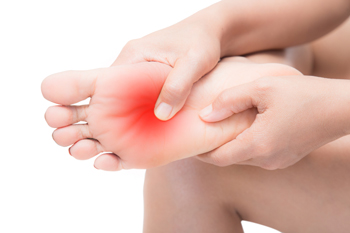 Peripheral neuropathy is the result of nerve damage that occurs in the extremities such as the hands and feet. When this peripheral neuropathy is inherited, it is known as Charcot-Marie-Tooth, or CMT. Charcot-Marie-Tooth affects people worldwide. While CMT is not life threatening, it does lead to the loss of mobility and function in the extremities as the nerves degenerate. There are many different genetic causes for CMT, but most cases have a variety of similar symptoms. These symptoms include having high arched feet, structural foot deformities and weakening of the muscles. Patients who are suffering from CMT should consult with a podiatrist for treatment options that can help improve function. Treatment options may include physical therapy, bracing, wearing properly fitting footwear, and maintaining a healthy weight.
Peripheral neuropathy is the result of nerve damage that occurs in the extremities such as the hands and feet. When this peripheral neuropathy is inherited, it is known as Charcot-Marie-Tooth, or CMT. Charcot-Marie-Tooth affects people worldwide. While CMT is not life threatening, it does lead to the loss of mobility and function in the extremities as the nerves degenerate. There are many different genetic causes for CMT, but most cases have a variety of similar symptoms. These symptoms include having high arched feet, structural foot deformities and weakening of the muscles. Patients who are suffering from CMT should consult with a podiatrist for treatment options that can help improve function. Treatment options may include physical therapy, bracing, wearing properly fitting footwear, and maintaining a healthy weight.
Neuropathy
Neuropathy can be a potentially serious condition, especially if it is left undiagnosed. If you have any concerns that you may be experiencing nerve loss in your feet, consult with Dr. Steven Schwartz from Pennsylvania. Our doctor will assess your condition and provide you with quality foot and ankle treatment for neuropathy.
What Is Neuropathy?
Neuropathy is a condition that leads to damage to the nerves in the body. Peripheral neuropathy, or neuropathy that affects your peripheral nervous system, usually occurs in the feet. Neuropathy can be triggered by a number of different causes. Such causes include diabetes, infections, cancers, disorders, and toxic substances.
Symptoms of Neuropathy Include:
- Numbness
- Sensation loss
- Prickling and tingling sensations
- Throbbing, freezing, burning pains
- Muscle weakness
Those with diabetes are at serious risk due to being unable to feel an ulcer on their feet. Diabetics usually also suffer from poor blood circulation. This can lead to the wound not healing, infections occurring, and the limb may have to be amputated.
Treatment
To treat neuropathy in the foot, podiatrists will first diagnose the cause of the neuropathy. Figuring out the underlying cause of the neuropathy will allow the podiatrist to prescribe the best treatment, whether it be caused by diabetes, toxic substance exposure, infection, etc. If the nerve has not died, then it’s possible that sensation may be able to return to the foot.
Pain medication may be issued for pain. Electrical nerve stimulation can be used to stimulate nerves. If the neuropathy is caused from pressure on the nerves, then surgery may be necessary.
If you have any questions, please feel free to contact our offices located in Chambersburg, and Mcconnellsburg, PA . We offer the newest diagnostic and treatment technologies for all your foot care needs.
Preventing Foot Injuries from Running
Healthy feet are key to having successful runs, which is why taking care of them is very important. It is important to make sure that your shoes fit properly and are not too tight or too loose. Your socks should be lightweight and water resistant. Moisturizing the feet is also key to preventing fissures and cracks from forming in the skin. In order to prevent athlete’s foot and other fungal infections, keeping the feet as dry and clean as possible is essential. Having properly trimmed toenails can be key to preventing ingrown toenails. If you are a runner who is struggling with foot related issues, it is important to consult with a podiatrist for suggestions on keeping your feet healthy.
Exercising your feet regularly with the proper foot wear is a great way to prevent injuries. If you have any concerns about your feet, contact Dr. Steven Schwartz of Pennsylvania. Our doctor will treat your foot and ankle needs.
How to Prevent Running Injuries
Many common running injuries are caused by overuse and overtraining. When the back of the kneecap starts wearing out and starts causing pain in your knee, this is commonly referred to as runner’s knee. Runner’s knee is a decrease in strength in your quadriceps and can occur if you’re not wearing properly fitted or supporting shoes. To prevent runner’s knee, focusing on hip strengthening is a good idea, as well as strengthening your quads to keep the kneecaps aligned.
What Are Some Causes of Running Injuries?
- One cause of a common running injury is called iliotibial band syndrome.
- Plantar fasciitis is also another common injury.
- Stress fractures can occur from overtraining, lack of calcium, or even your running style.
Best Ways to Prevent Running Injuries
- Wear footwear that fits properly and suits your running needs.
- Running shoes are the only protective gear that runners have to safeguard them from injury.
- Make a training schedule. Adding strengthening exercises as well as regular stretching can help keep you strong and limber and can lessen the possibility of injuries.
- Stretching keeps muscles limber; this will help you gain better flexibility.
If you have any questions please feel free to contact our offices located in Chambersburg, and Mcconnellsburg, PA . We offer the newest diagnostic and treatment technologies for all your foot and ankle needs.
What to Do After an Ankle Sprain
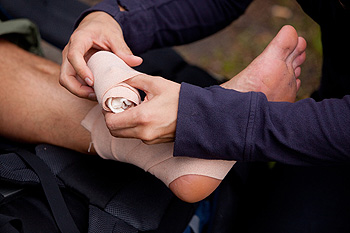 Ankle sprains are one of the most common injuries that occur while playing sports. They are the result of a sudden twist or force that over stretches or tears the ligaments in the joints. The most common sign of a sprained ankle is swelling and pain in the ankle, especially when weight is put on it. Resting and icing the ankle is generally recommended for the treatment of ankle sprains. Ankle sprains that are unable to bear any weight and prohibit walking need to be checked by a podiatrist. A podiatrist will take an X-ray to make sure that the ankle is not broken, and they will be able to help with treatment of severe sprains. Another reason to visit a podiatrist is that a more severe sprain can weaken the ankle and lead to future sprains. Proper medical care can help prevent these.
Ankle sprains are one of the most common injuries that occur while playing sports. They are the result of a sudden twist or force that over stretches or tears the ligaments in the joints. The most common sign of a sprained ankle is swelling and pain in the ankle, especially when weight is put on it. Resting and icing the ankle is generally recommended for the treatment of ankle sprains. Ankle sprains that are unable to bear any weight and prohibit walking need to be checked by a podiatrist. A podiatrist will take an X-ray to make sure that the ankle is not broken, and they will be able to help with treatment of severe sprains. Another reason to visit a podiatrist is that a more severe sprain can weaken the ankle and lead to future sprains. Proper medical care can help prevent these.
Although ankle sprains are common, they aren’t always minor injuries. If you need your ankle injury looked at, contact Dr. Steven Schwartz from Pennsylvania. Our doctor can provide the care you need to keep you pain-free and on your feet.
How Does an Ankle Sprain Occur?
Ankle sprains are the result of a tear in the ligaments within the ankle. These injuries may happen when you make a rapid shifting movement while your foot is planted. A less common way to sprain your ankle is when your ankle rolls inward while your foot turns outward.
What Are the Symptoms?
- Pain at the sight of the tear
- Bruising/Swelling
- Ankle area is tender to touch
- In severe cases, may hear/feel something tear
- Skin discoloration
Preventing a Sprain
- Wearing appropriate shoes for the occasion
- Stretching before exercises and sports
- Knowing your limits
Treatment of a Sprain
In many cases, the RICE method (Rest, Ice, Compression, and Elevate) is used to treat ankle sprains. However, you should see a podiatrist to see which treatment option would work best with your injury. In severe cases, surgery may be required.
It is important to ask your doctor about rehab options after you receive treatment for your injury. Stretching, strength training, and balance exercises may help the ankle heal while also preventing further injury.
If you have any questions, please feel free to contact our offices located in Chambersburg, and Mcconnellsburg, PA . We offer the newest diagnostic and treatment technologies for all your foot care needs.
Treatment Options for a Broken Toe
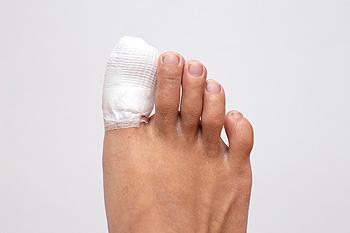 A common sign of a broken toe is noticeable bruising, which usually coincides with pain and discomfort. Additionally, if the fracture is severe, the bone may protrude from the skin. A broken toe may be the result of trauma, such as a heavy object falling on it or stubbing it against a piece of furniture. After a diagnosis is determined, which generally consists of having an X-ray taken and the affected toe examined, proper treatment can begin. A common method for healing a broken toe is referred to as buddy taping. This is accomplished by taping the affected toe to the toe next to it. This is an effective method for providing the necessary stability as the healing process occurs. If the break is severe or broken in multiple spots, surgery may be necessary for proper healing. If you think your toe may be broken or you would like more information about various treatment options, please speak with a podiatrist today.
A common sign of a broken toe is noticeable bruising, which usually coincides with pain and discomfort. Additionally, if the fracture is severe, the bone may protrude from the skin. A broken toe may be the result of trauma, such as a heavy object falling on it or stubbing it against a piece of furniture. After a diagnosis is determined, which generally consists of having an X-ray taken and the affected toe examined, proper treatment can begin. A common method for healing a broken toe is referred to as buddy taping. This is accomplished by taping the affected toe to the toe next to it. This is an effective method for providing the necessary stability as the healing process occurs. If the break is severe or broken in multiple spots, surgery may be necessary for proper healing. If you think your toe may be broken or you would like more information about various treatment options, please speak with a podiatrist today.
A broken toe can be very painful and lead to complications if not properly fixed. If you have any concerns about your feet, contact Dr. Steven Schwartz from Pennsylvania. Our doctor will treat your foot and ankle needs.
What to Know About a Broken Toe
Although most people try to avoid foot trauma such as banging, stubbing, or dropping heavy objects on their feet, the unfortunate fact is that it is a common occurrence. Given the fact that toes are positioned in front of the feet, they typically sustain the brunt of such trauma. When trauma occurs to a toe, the result can be a painful break (fracture).
Symptoms of a Broken Toe
- Throbbing pain
- Swelling
- Bruising on the skin and toenail
- The inability to move the toe
- Toe appears crooked or disfigured
- Tingling or numbness in the toe
Generally, it is best to stay off of the injured toe with the affected foot elevated.
Severe toe fractures may be treated with a splint, cast, and in some cases, minor surgery. Due to its position and the pressure it endures with daily activity, future complications can occur if the big toe is not properly treated.
If you have any questions please feel free to contact our offices located in Chambersburg, and Mcconnellsburg, PA . We offer the newest diagnostic and treatment technologies for all your foot and ankle needs.
How Uric Acid Causes Gout
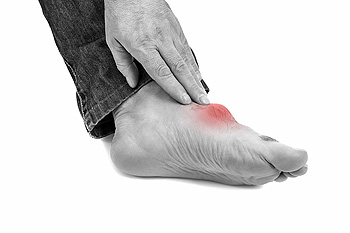 Gout is a very painful type of arthritis that causes the joints to become stiff, hot, and tender. Gout is caused by a buildup of uric acid, most commonly in the big toe. Uric acids are produced when consuming high-purine foods such as red meat and alcohol. Too much uric acid can build up into needle-like crystals that inflame the joints. One key to manage this, is staying properly hydrated. It is also important to reduce or eliminate the consumption of alcohol and meat in order to manage gout. Maintaining a proper healthy weight also helps manage the uric acid buildup. Those who frequently experience gout attacks should consult with a podiatrist who can help provide tips for managing the effects of gout.
Gout is a very painful type of arthritis that causes the joints to become stiff, hot, and tender. Gout is caused by a buildup of uric acid, most commonly in the big toe. Uric acids are produced when consuming high-purine foods such as red meat and alcohol. Too much uric acid can build up into needle-like crystals that inflame the joints. One key to manage this, is staying properly hydrated. It is also important to reduce or eliminate the consumption of alcohol and meat in order to manage gout. Maintaining a proper healthy weight also helps manage the uric acid buildup. Those who frequently experience gout attacks should consult with a podiatrist who can help provide tips for managing the effects of gout.
Gout is a foot condition that requires certain treatment and care. If you are seeking treatment, contact Dr. Steven Schwartz from Pennsylvania. Our doctor will treat your foot and ankle needs.
What Is Gout?
Gout is a type of arthritis caused by a buildup of uric acid in the bloodstream. It often develops in the foot, especially the big toe area, although it can manifest in other parts of the body as well. Gout can make walking and standing very painful and is especially common in diabetics and the obese.
People typically get gout because of a poor diet. Genetic predisposition is also a factor. The children of parents who have had gout frequently have a chance of developing it themselves.
Gout can easily be identified by redness and inflammation of the big toe and the surrounding areas of the foot. Other symptoms include extreme fatigue, joint pain, and running high fevers. Sometimes corticosteroid drugs can be prescribed to treat gout, but the best way to combat this disease is to get more exercise and eat a better diet.
If you have any questions please feel free to contact our offices located in Chambersburg, and Mcconnellsburg, PA . We offer the newest diagnostic and treatment technologies for all your foot and ankle needs.
What Is an Achilles Tendon Rupture?
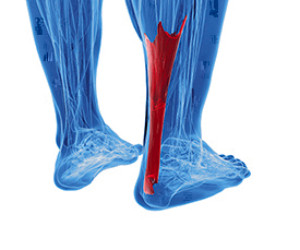 An Achilles tendon rupture refers to a tear of the Achilles tendon, a band of fibrous tissue that connects the calf muscles to the heel bone on the back of the lower leg. Ruptures tend to occur while playing recreational sports. They can happen to anyone, but are most common in men ages 30-50. If you have ruptured your Achilles tendon, you may hear a popping sound, which is then followed by a sudden and severe pain. An Achilles tendon rupture can make it difficult to run, stand on the toes, or climb stairs. If you think that you may have ruptured your Achilles tendon, it is suggested that you consult a podiatrist for treatment.
An Achilles tendon rupture refers to a tear of the Achilles tendon, a band of fibrous tissue that connects the calf muscles to the heel bone on the back of the lower leg. Ruptures tend to occur while playing recreational sports. They can happen to anyone, but are most common in men ages 30-50. If you have ruptured your Achilles tendon, you may hear a popping sound, which is then followed by a sudden and severe pain. An Achilles tendon rupture can make it difficult to run, stand on the toes, or climb stairs. If you think that you may have ruptured your Achilles tendon, it is suggested that you consult a podiatrist for treatment.
Achilles tendon injuries need immediate attention to avoid future complications. If you have any concerns, contact Dr. Steven Schwartz of Pennsylvania. Our doctor can provide the care you need to keep you pain-free and on your feet.
What Is the Achilles Tendon?
The Achilles tendon is a tendon that connects the lower leg muscles and calf to the heel of the foot. It is the strongest tendon in the human body and is essential for making movement possible. Because this tendon is such an integral part of the body, any injuries to it can create immense difficulties and should immediately be presented to a doctor.
What Are the Symptoms of an Achilles Tendon Injury?
There are various types of injuries that can affect the Achilles tendon. The two most common injuries are Achilles tendinitis and ruptures of the tendon.
Achilles Tendinitis Symptoms
- Inflammation
- Dull to severe pain
- Increased blood flow to the tendon
- Thickening of the tendon
Rupture Symptoms
- Extreme pain and swelling in the foot
- Total immobility
Treatment and Prevention
Achilles tendon injuries are diagnosed by a thorough physical evaluation, which can include an MRI. Treatment involves rest, physical therapy, and in some cases, surgery. However, various preventative measures can be taken to avoid these injuries, such as:
- Thorough stretching of the tendon before and after exercise
- Strengthening exercises like calf raises, squats, leg curls, leg extensions, leg raises, lunges, and leg presses
If you have any questions please feel free to contact our offices located in Chambersburg, and Mcconnellsburg, PA . We offer the newest diagnostic tools and technology to treat your foot and ankle needs.
Can Running Shoes Be Used for Walking?
Running and walking shoes are different in many ways, and while most sportswear brands do sell walking shoes, the selection is often limited. Fortunately, running shoes can be worn for walking. However, the running shoes that you intend to use for walking should have certain features built in to ensure that you can walk in them safely and efficiently. The shoes that you choose to walk in should have an angled heel, which allows the heel of the foot to land smoothly on the ground while walking. The shoes should also be flexible in the front, have ample cushioning, fit your foot well, and be made of a breathable material. For more information on finding the right shoes for you, please consult with a podiatrist.
For more information about walking shoes versus running shoes, consult with Dr. Steven Schwartz from Pennsylvania. Our doctor can measure your feet to determine what your needs are and help you find an appropriate pair of footwear.
Foot Health: The Differences between Walking & Running Shoes
There are great ways to stay in shape: running and walking are two great exercises to a healthy lifestyle. It is important to know that running shoes and walking shoes are not interchangeable. There is a key difference on how the feet hit the ground when someone is running or walking. This is why one should be aware that a shoe is designed differently for each activity.
You may be asking yourself what the real differences are between walking and running shoes and the answers may shock you.
Differences
Walking doesn’t involve as much stress or impact on the feet as running does. However, this doesn’t mean that you should be any less prepared. When you’re walking, you land on your heels and have your foot roll forward. This rolling motion requires additional support to the feet.
Flexibility – Walking shoes are designed to have soft, flexible soles. This allows the walker to push off easily with each step.
If you have any questions, please feel free to contact our offices located in Chambersburg, and Mcconnellsburg, PA . We offer the newest diagnostic and treatment technologies for all your foot care needs.

